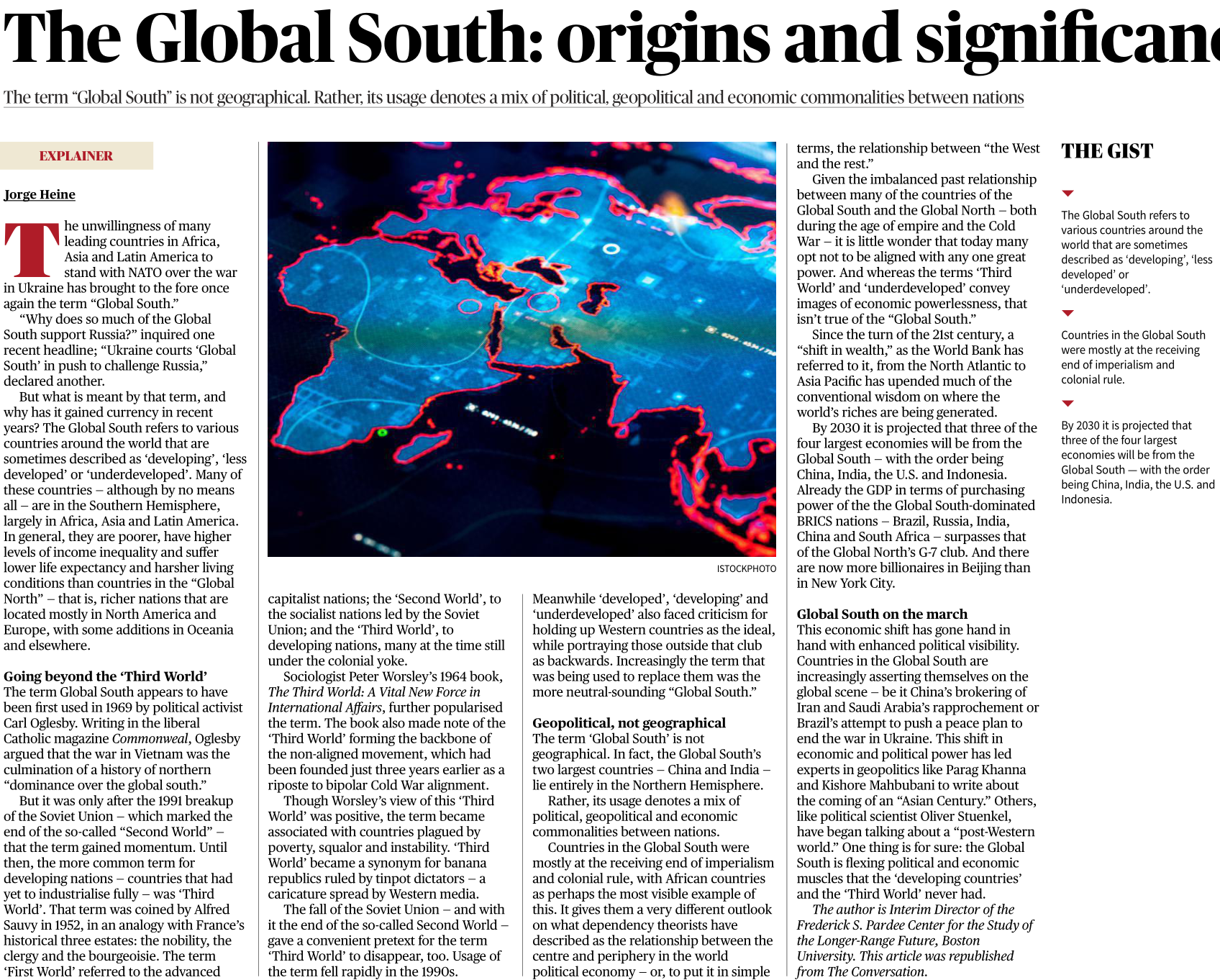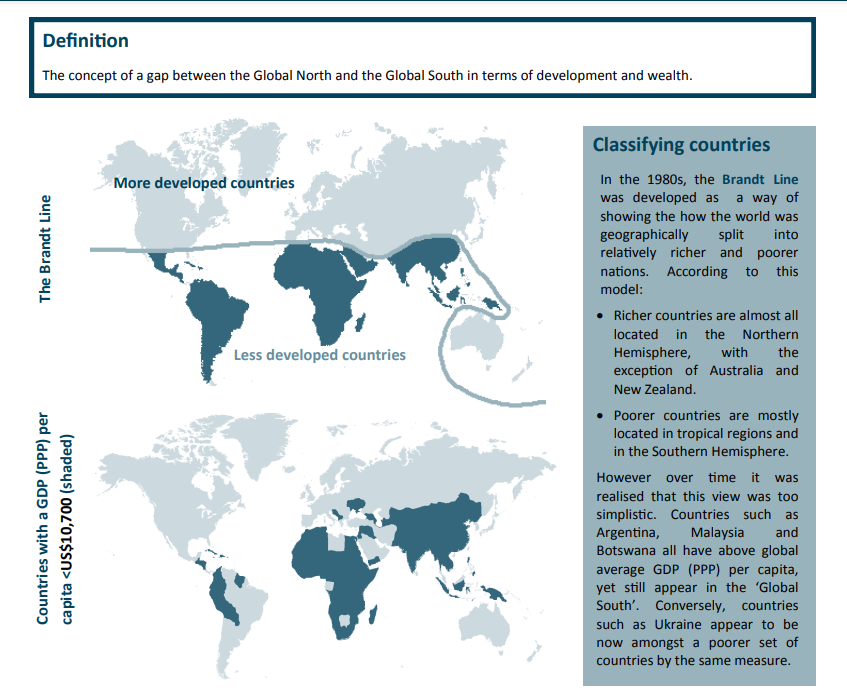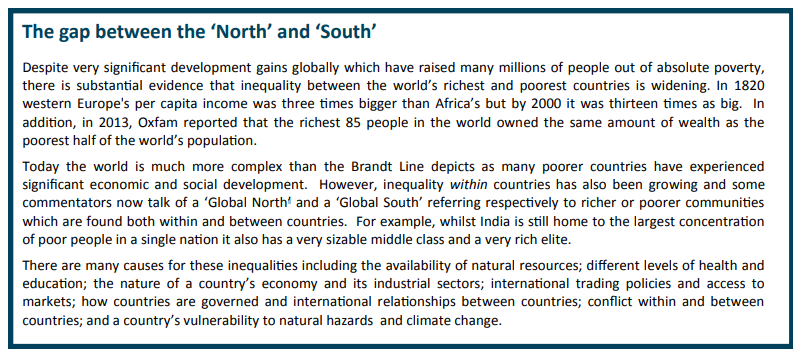Description

Disclaimer: Copyright infringement not intended.
Context
- The unwillingness of many leading countries in Africa, Asia, and Latin America to stand with NATO over the war in Ukraine has brought to the fore once again the term “Global South.”

Understanding the Global South
- The Global South refers to various countries around the world that are sometimes described as “developing,” “less developed” or “underdeveloped.”
- Many of these countries – although by no means all – are in the Southern Hemisphere, largely in Africa, Asia and Latin America.
- In general, they are poorer, have higher levels of income inequality, and suffer lower life expectancy and harsher living conditions than countries in the “Global North” — that is, richer nations that are located mostly in North America and Europe, with some additions in Oceania and elsewhere.


Genesis of Global South
- The term Global South appears to have been first used in 1969 by political activist Carl Oglesby.
- Writing in the liberal Catholic magazine Commonweal, Oglesby argued that the war in Vietnam was the culmination of a history of northern “dominance over the global south.”
- But it was only after the 1991 breakup of the Soviet Union – which marked the end of the so-called “Second World” – that the term gained momentum.
Geopolitical connotation
- The term “Global South” is not geographical. In fact, the Global South’s two largest countries – China and India – lie entirely in the Northern Hemisphere.
- Rather, its usage denotes a mix of political, geopolitical, and economic commonalities between nations.
- Countries in the Global South were mostly at the receiving end of imperialism and colonial rule, with African countries as perhaps the most visible example of this.
Economic Shift
- Since the turn of the 21st century, a “shift in wealth,” as the World Bank has referred to it, from the North Atlantic to Asia Pacific has upended much of the conventional wisdom on where the world’s riches are being generated.
- By 2030 it is projected that three of the four largest economies will be from the Global South – with the order being China, India, the United States, and Indonesia.
- Already the GDP in terms of purchasing power of the Global South-dominated BRICS nations – Brazil, Russia, India, China and South Africa – surpasses that of the Global North’s G7 club. And there are now more billionaires in Beijing than in New York City.
- This economic shift has gone hand in hand with enhanced political visibility. Countries in the Global South are increasingly asserting themselves on the global scene – be it China’s brokering of Iran and Saudi Arabia’s rapprochement or Brazil’s attempt to push a peace plan to end the war in Ukraine.
- This shift in economic and political power has led experts in geopolitics political scientist Oliver Stuenkel, have began talking about a “post-Western world.”
- The Global South is flexing political and economic muscles that the “developing countries” and the “Third World” never had.
|
PRACTICE QUESTION
Q. Countries in the Global South are increasingly asserting themselves on the global scene and the Global South is flexing political and economic muscles that the “developing countries” and the “Third World” never had. Comment.
|

https://epaper.thehindu.com/ccidist-ws/th/th_delhi/issues/43154/OPS/G26BFGF7V.1.png?cropFromPage=true















